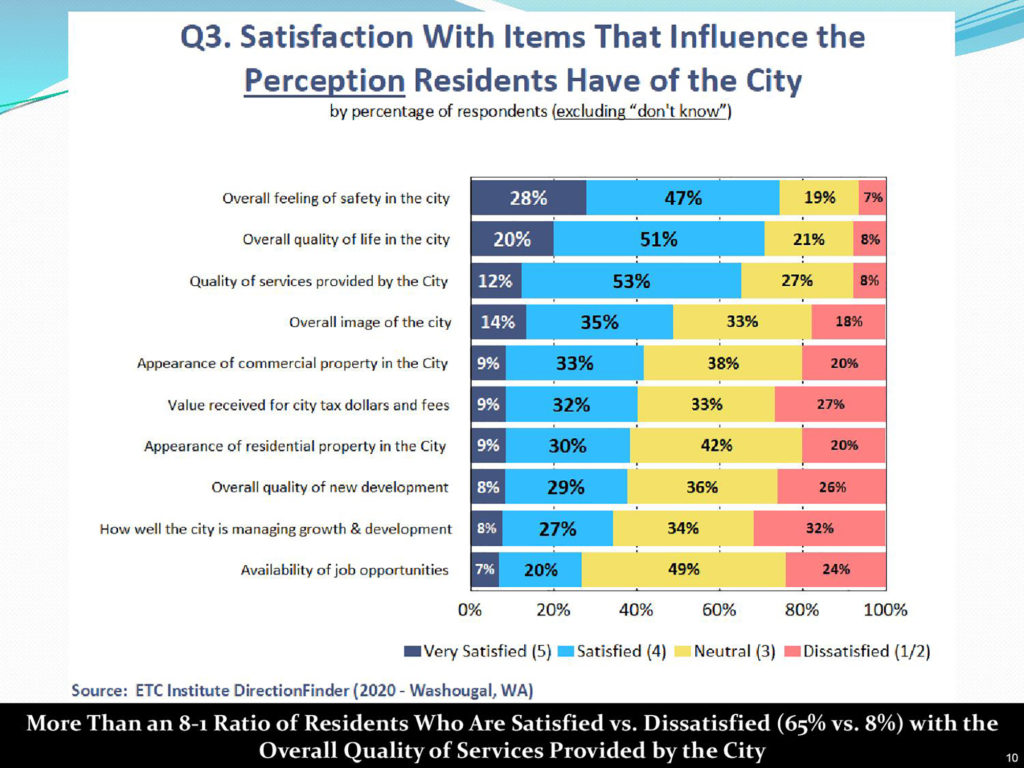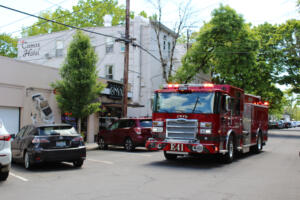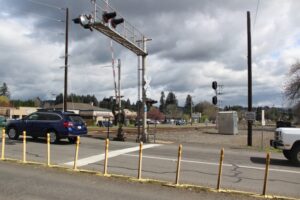Washougal residents have a positive overall perception of their city but would like to see improved street maintenance and economic development efforts, according to the results of a community survey.
Chris Tatham, chief executive officer of the ETC Institute, an Olathe, Kansas-based consulting firm, told city leaders during a May 15 virtual presentation that satisfaction ratings held steady or increased in 49 of 54 categories since the city’s last community survey in 2018.
Sixty-five percent of residents indicated they’re satisfied with the overall quality of city services — an increase of 5 percent from 2018 — while 8 percent of residents indicated a dissatisfaction with the overall quality of city services.
“Most residents in Washougal think you’re doing a great job,” Tatham told city leaders. “Compared to other communities, you’re setting the standard, particularly in customer service and the overall quality of city services. The improvements you’ve made just over the last couple of years are something you should be really proud of. It’s very unusual that I give a report like this and a community improves in 49 of 54 areas.”
The city mailed 2,500 six-page surveys to a random sample of Washougal residents earlier this year and generated 517 responses. The feedback will be used to determine priorities, guide budget and investment decisions, measure trends and compare performance with other communities nationwide, according to a news release issued by the city.




